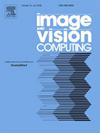连续手语识别的自适应跨模态多粒度对比学习
IF 4.2
3区 计算机科学
Q2 COMPUTER SCIENCE, ARTIFICIAL INTELLIGENCE
引用次数: 0
摘要
持续的手语识别通过识别手语视频的语义,帮助听障群体参与社会交往。然而,现有的CSLR方法通常只在句子级或框架级实现跨模态对齐,并没有充分考虑冗余框架和语义独立的光泽标识符对识别结果的潜在影响。为了改善上述方法的局限性,我们提出了一种用于连续手语识别的自适应跨模态多粒度对比学习(ACMC),通过多粒度对比机制实现更准确的跨模态语义对齐。首先,ACMC利用帧提取器和时态建模模块依次获得视觉模态的细粒度和粗粒度特征,并通过CLIP文本编码器提取文本模态的细粒度和粗粒度特征。然后,ACMC采用粗粒度对比和细粒度对比方法,从全局和局部角度对视觉和文本模态特征进行有效对齐,并通过跨粒度对比减轻冗余帧和语义独立的光泽标识符带来的语义干扰。此外,在视频帧提取阶段,我们设计了自适应学习模块,通过计算得到的离散空间特征决策矩阵来增强视频帧关键区域的特征,并将关键帧的卷积特征与相邻帧之间的轨迹信息自适应融合,从而降低了计算成本。实验结果表明,所提出的ACMC模型在PHOENIX14、PHOENIX14- t和CSL-Daily等手语数据集上取得了很好的识别效果。本文章由计算机程序翻译,如有差异,请以英文原文为准。
ACMC: Adaptive cross-modal multi-grained contrastive learning for continuous sign language recognition
Continuous sign language recognition helps the hearing-impaired community participate in social communication by recognizing the semantics of sign language video. However, the existing CSLR methods usually only implement cross-modal alignment at the sentence level or frame level, and do not fully consider the potential impact of redundant frames and semantically independent gloss identifiers on the recognition results. In order to improve the limitations of the above methods, we propose an adaptive cross-modal multi-grained contrastive learning (ACMC) for continuous sign language recognition, which achieve more accurate cross-modal semantic alignment through a multi-grained contrast mechanism. First, the ACMC uses the frame extractor and the temporal modeling module to obtain the fine-grained and coarse-grained features of the visual modality in turn, and extracts the fine-grained and coarse-grained features of the text modality through the CLIP text encoder. Then, the ACMC adopts coarse-grained contrast and fine-grained contrast methods to effectively align the features of visual and text modalities from global and local perspectives, and alleviate the semantic interference caused by redundant frames and semantically independent gloss identifiers through cross-grained contrast. In addition, in the video frame extraction stage, we design an adaptive learning module to strengthen the features of key regions of video frames through the calculated discrete spatial feature decision matrix, and adaptively fuse the convolution features of key frames with the trajectory information between adjacent frames, thereby reducing the computational cost. Experimental results show that the proposed ACMC model achieves very competitive recognition results on sign language datasets such as PHOENIX14, PHOENIX14-T and CSL-Daily.
求助全文
通过发布文献求助,成功后即可免费获取论文全文。
去求助
来源期刊

Image and Vision Computing
工程技术-工程:电子与电气
CiteScore
8.50
自引率
8.50%
发文量
143
审稿时长
7.8 months
期刊介绍:
Image and Vision Computing has as a primary aim the provision of an effective medium of interchange for the results of high quality theoretical and applied research fundamental to all aspects of image interpretation and computer vision. The journal publishes work that proposes new image interpretation and computer vision methodology or addresses the application of such methods to real world scenes. It seeks to strengthen a deeper understanding in the discipline by encouraging the quantitative comparison and performance evaluation of the proposed methodology. The coverage includes: image interpretation, scene modelling, object recognition and tracking, shape analysis, monitoring and surveillance, active vision and robotic systems, SLAM, biologically-inspired computer vision, motion analysis, stereo vision, document image understanding, character and handwritten text recognition, face and gesture recognition, biometrics, vision-based human-computer interaction, human activity and behavior understanding, data fusion from multiple sensor inputs, image databases.
 求助内容:
求助内容: 应助结果提醒方式:
应助结果提醒方式:


